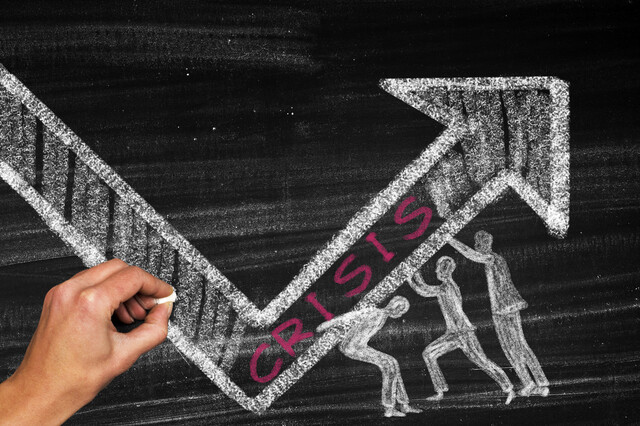By the end of this article, students should be able to:
- identify what wellness coaching can accomplish in terms of facts;
- recognize the fiction, or what is idealistic thinking;
- understand client expectations.
Because wellness coaching is a still-developing career, coaches and clients may be uncertain about what can be accomplished. This lesson will separate fact from fiction, as well as clue you in to untold client expectations.
In Lesson Three, we explored a lot about setting goals. A portion of that focused on realistic goals. It is good to re-emphasize that here.
|
You are: a leader;
a guide;
an advocate;
a sounding board;
a partner in your client's wellness goals.
|
These are all very nice-sounding things and true, but do not mix wellness coaching up with any of the titles below.
|
You are not: a miracle worker;
any kind of god;
an expert in someone else's life;
a doctor;
a therapist;
a psychologist;
a financial adviser;
a prophet/clairvoyant/fortune teller.
|
When clients come to you full of wild ideas that you hold the answer to their every dream and desire, it may be tempting to let them believe this. You may even have a strong history of helping your wellness coaching clients to achieve what they want. However, you are providing a service, pure and simple. It may be a service that you have more talent or flair for than others, but you are not the only one out there doing this.
Sure. There is nothing wrong with honest, authentic, factual, self-representation. If you have former clients who are willing to be referrals, pass on those names to your potential new clients.
If you have published articles, you can make copies or titles available. If you keep any statistics about the numbers or percentages of satisfied clients or clients who have achieved a certain number of goals through utilizing your service, etc., those are great things to share as well.
Present yourself and your services to potential clients in a manner that is reflective of reality, not just the client's desires. It is important to make expectations clear from the beginning. A client who wants unrealistic goals attained in a ridiculously short amount of time needs to be brought down to earth. Yes, you can do this respectfully and in a matter-of-fact way. Even if this causes the client to go elsewhere, you should rest easy, knowing that you were honest and not willing to say you could help with something that you would never be able to deliver on. Chances are good that if a client is not willing to listen to reason from you, the professional wellness coach, he or she is not truly ready to do the hard work it is going to take to make changes.
Will I get rich by working as a wellness coach?
As with most anything, earned income for wellness coaching will fall into a natural bell curve, with a few people making very little, a few people making a lot, and most of the rest of us falling somewhere in the middle. Anything is possible, but it is solid advice to not count on making what you hope to the first year. You will put in more time, effort, and expense into starting your company than you will probably reap financially at the end of a year's time. However, this can be said of many businesses upon start-up. Once you get going, build a strong client base, get word-of-mouth referrals, etc., then you will probably be able to make a more stable, dependable income.
No. You are a guide, a helper, an aide; but people fix themselves. No one can do the work of changing one's wellness except for the client. You can work day and night, around the clock, to try to present options, choices, and strategies for your clients, but you absolutely cannot do the work for them. This is a good truth. This means that when the client is able to make changes, you can reinforce that by pointing out that no matter what you said or shared, it was actually the client who did the work. This can be such an eye-opener and motivator for clients and a very powerful tool to keep them working and changing further.
Fiction
The lists presented in this lesson are not meant to encourage or discourage you from either using the services of a wellness coach or becoming a wellness coach. Rather, they are intended to keep you, as client or coach, in check. When expectations are realistic, both client and coach are protected. There is nothing wrong with shooting for the stars and hoping for miracles, but in no way, shape, or form should promises of those sort be made when embarking on a client-coach relationship.
Activity: I See, They See
Example:|
I See A girl with messy brown hair. Someone who likes to sleep in. Someone who has to push herself to socialize. A girl who still feels like a girl and not truly an adult. Someone who really cares deeply for the friends she has. Someone who is easily hurt by any perceived rejections. A person who is out of shape. Someone who is creative. Someone who never gets tired of watching "Roseanne" reruns. A person who could use work on her patience. They See Hair that is always in a ponytail. Someone who is always yawning, as if she is perpetually tired. A loner. An independent. Someone who likes to spend time with her daughter. Someone who does not have many friends. Someone who let herself go in pregnancy and motherhood. A woman with a flair for creation and expression in writing, arts, crafts. A mother who puts her daughter first. A good listener. |
Why We Get Stuck and How to Get Going Again
By the end of this section, students should be able to:
- understand how their own and their clients' fears can slow progress;
- see the advantages in a seemingly negative situation;
- realize that addressing just one thing can benefit everything else.
Coaches also should take note: No matter how tough the stuck point seems to the coach, it is at least twice as hard on the client.
For the purposes of this section, we are not addressing a new client coming to you and saying that he or she feels stuck in life, job, family, etc. Instead, we are focusing on a client-coach relationship that has been going on for some period of time, in which at least some change and progress has already been made, but in which further change is desired.
There is no true set-point for a client to become stuck. It could happen exactly in the middle of a planned 12-week timeline, it could happen at the 11-week mark, and in some cases, clients will figure out how to get themselves unstuck and merely report later that they had faced a challenge. No matter when the stuck point comes, there are reasons for its occurrence and positive lessons to be learned. As always, coaches, seize the opportunity to further help your client.
The idea of change, as we have already noted, is great. Who would not want to go from being broke, living paycheck to paycheck, to winning a few hundred million dollars in a lottery? The idea of change is fabulous. We love to imagine the happy ending, such as seeing yourself successful, thin, in shape, surrounded by caring friends at your 25thwedding anniversary. However, the whole "middle part" is where it gets muddled. It is not as easy to visualize how change happens and what it looks like along the way. Oftentimes, when we get stuck, it is simply because we lose sight of the process, or never could have imagined the process would look like this. In fact, it can get downright scary.
If you recall, in the not-too-distant past, reality television went through a makeover-heavy phase of television programming ("Extreme Makeover" and "The Swan" are two shows that were fairly popular). So-called ugly duckling participants were overhauled in a matter of weeks, shedding pounds, getting teeth fixed, changing hair, clothing, diet, and so on, until they revealed themselves to a mirror or their family and friends, with great surprise and glorification of the new self.
That is not reality, folks. However, the long, often hard and challenging process of making wellness changes is not good reality television fodder. No matter how diligently you try to bring home realistic expectations to clients, their minds may still be visualizing someone else's seemingly overnight changes and success. Secretly, they may be expecting that will be the case for them, as well.
Okay, but what is scary about success? Again, it is not the end point that leads to fear and a "stuck" phase. The fear comes out in questions like these: "Why is this taking so long?" "What am I doing wrong?" "If this is good for me, why does it feel bad?" "Should it really be this hard?" Some may even say, "I'm not used to this, so I'm not sure it's worth it."
When a client begins to make changes, a third party, such as a relative, friend, or wellness coach, is often the more objective party, noticing the changes sooner than the client does, recognizing the hard work that is being put into making the changes and seeing the potential for the client to continue on this positive path. The client, however, is the one going through the steps and having to change things that, though seemingly basic, may have a lot of attached meaning and associations that are just now becoming clear.
For example, cutting caffeine out of one's diet seems like a great, positive, healthy change for someone. However, after a week of not gathering around the coffee pot to gossip with co-workers, that person may start to think, "Well, maybe this wasn't such a good idea. Now I seem antisocial. But if I go back there, I'm going to be tempted to have a cup of coffee and then what? Do I care? Should I care?" A whole flood of questions may erupt from a seemingly simple choice that the client has made in regard to physical wellness.
Fear can freeze us like a deer in headlights. Afraid of making the "wrong" choice, we make no choice. No choice equates to stuck client.
Thinking backwards is a technique often used in the world of abnormal psychology. When it comes to mental health disorders that are not organic in nature (i.e., they are not accounted for by physical or chemical abnormalities), it can be helpful to examine the problem for its benefits.
Say what?
Instead of looking at a mental health challenge for what it takes away, look at what it adds or helps with. Consider the client with panic disorder who finds he or she cannot get on a plane, train, or into an automobile without experiencing high anxiety and/or panic attacks. What is the benefit to that? Looking at it backwards, one could say that some benefits are saving on the cost of travel, saving on paying for gas, avoiding responsibility and accountability by being unable to travel to a job or work location, or being able to continue to have others take care of you despite being a legal adult.
Thinking backwards can be a bit shocking, but the example given above is an extreme one. As a wellness coach, you will not be diagnosing anyone or having to think in terms of abnormal psychology. However, if you apply the "thinking backwards" strategy to the client who wanted to cut out caffeine, you may have come up with the reasons the client is already at least subconsciously aware of: the fear of being different or missing out on a social opportunity.
With the thinking backwards strategy in mind, you need not confront clients directly with their fears, but you could instead approach them this way: "I understand the struggle you're having. It's a tough goal sometimes. I've had clients who were actually able to identify they were struggling because they were afraid of missing a social opportunity or being seen as just weird for not indulging in what seems to be such a common activity for most adults. But then they decided their greater goals were worth it and they found other ways to compensate for the missed coffee huddle in the morning." Clients may or may not identify with whatever backwards thinking answers you come up with, but perhaps it will inspire more discussion on the topic and/or get clients "thinking backwards" about their own issues, too.
Yes, that is right. Teach clients the very same strategy you may be using behind the scenes to figure out why they are stuck. This way, you are giving them yet another tool for coping with times when you are not around or the coaching relationship has ended, plus it gives them an out. Clients can be very self-conscious about their fears or what is holding them back. Many of us do not want to appear weak, even when paying someone for services. So give clients this tool that they can use whenever they feel like it, without having to admit insights to you. If the work is getting done, does it really matter if they share with you their insights?
More on Being Stuck
For instance, if a client is struggling with getting a particular bill paid off, perhaps you need to help him or her find another way to approach the debt. Have you examined how the freed-up money from paying that bill will be used in the future? Does the client need a visual reminder of how much already has been paid? Maybe for one month the client pays just the minimum on that bill and applies the extra to a different bill. It may not make sense logically, but the impact mentally may have a big effect. As with shopper's remorse, if the client applies any extra money that would have been paid on one bill to another, he or she may later think, "I wish I just would have paid off that bill so there's one less bill overall." That freedom to change things up a bit could inspire the person to work that much harder the next time the issue comes up.
Remember, you are a coach, a guide, a leader; but you cannot do the work for your clients. So if they need a change from time to time or are stuck and just do not want to go on, it does not mean that you or they are failures. Sometimes we need to experience frustration, anger, disappointment, and even failure in order to find our bootstraps and pull ourselves back up.
Always look for opportunities to reframe seemingly negative things for clients. Very few people thrive on being mentally beat-up. Likewise, very few people thrive on being constantly adored and told that they can do no wrong. You can find a good, positive, authentic middle ground that will benefit both you and the client to continue on with the work that needs to be done.






























